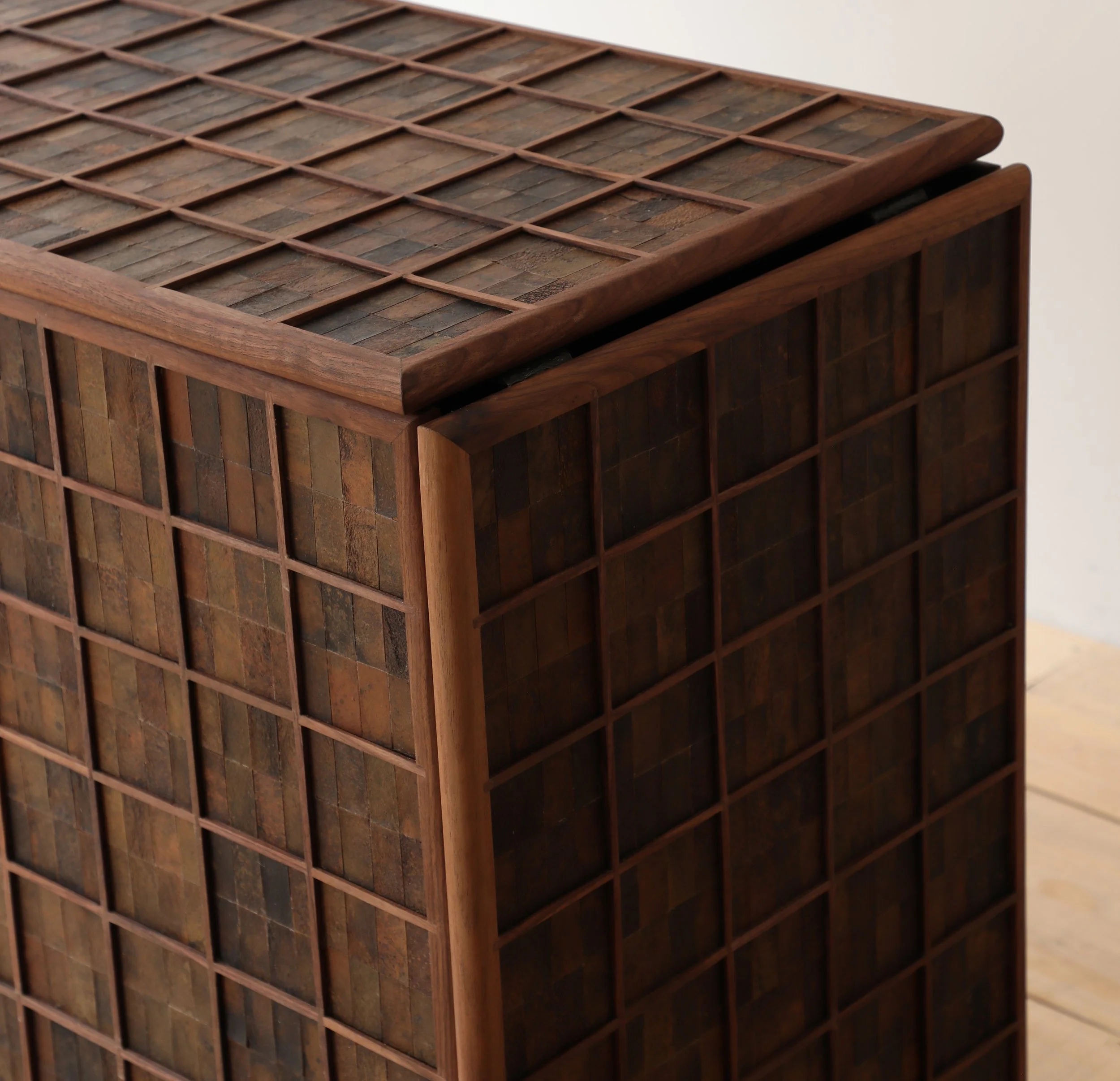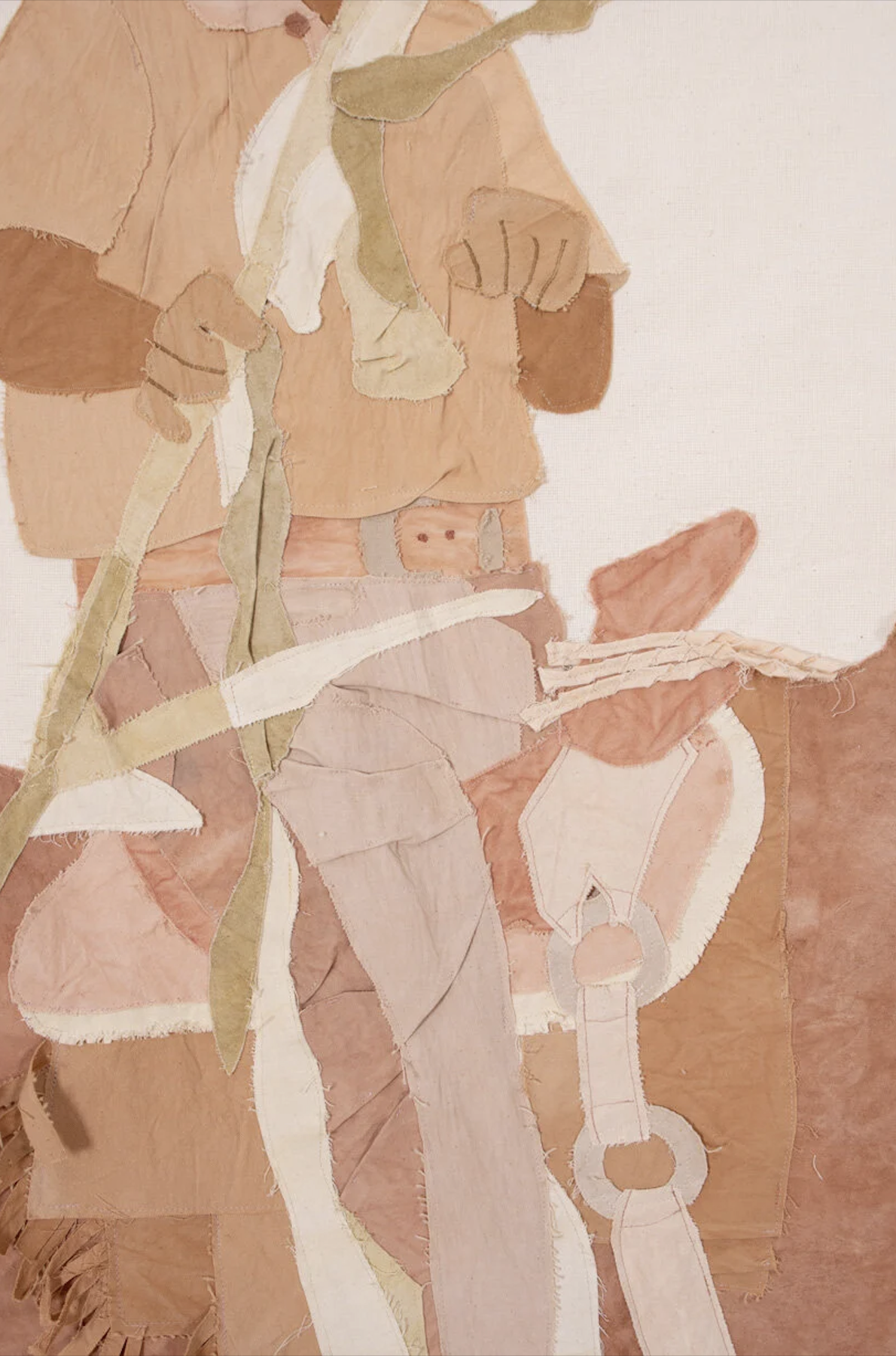AVOCADO VENEER
From avocado waste to wonder, Fernando's creations blend sustainability with art, turning nature's leftovers into design treasures.
In recent decades, the worldwide demand for avocado has reached astronomic levels. Globally, no brunch menu is complete without the ‘superfood’ either smeared, sliced or smashed.
This phenomenon can be in part traced back to when the governments of the United States, Mexico and Canada signed the 1994 North American Free Trade Agreement. With the stroke of a pen, the handbrake was released on buying and selling between the three nations. One of Mexico’s prime agricultural products was and is, of course, the avocado. It is indeed native to the country and the etymology of the word ‘avocado’ even stems from the native Mexican Nahuatl - ‘ahuacatl’.
After 1994, the lobby of Mexican avocado growers began a public relations assault to try to create a bigger market for avocado in the US. Through cunning TV commercials, like inventing the Super Bowl guacamole tradition, they helped transform the reputation of the fruit from the maligned ‘alligator pear’ to a symbol of health and wealth.
One Mexican state in particular has benefited financially from this avocado boom: Michoacan. 90% of the avocados imported into the US come from Michoacan, largely because of their climate and rich soils that allow for production year-round. The fruit has become so profitable it’s often referred to as ‘green gold’. Many locals transformed their land from forest to avocado plantations and some transformed themselves into rich farmers or distributors.
Indeed, the consequences of this culinary obsession have been extremely lucrative for a few. But it has also been devastating for many others.
“Textile art has always been linked to protest art, they can be very strong in terms of communication. All the colours in the tapestry are done by avocado dye, it's really important for me to encrust the material itself into the process.
That's another super powerful thing about material design – that you can start to sink a curiosity that can be very superficial at the beginning, but once you have the curiosity and sense of wonder, you open people to be more receptive to the stories”
— Fernando Laposse
Michoacan is an oasis of natural resources, especially because of their lush forests populated by pines, oaks and firs. The state also plays host to a natural spectacle: each year, North America’s monarch butterflies migrate from all corners of the continent to a single forest in Michoacan. The trees become so laden with butterflies, the branches break under their collective weight. During the day, the skies look almost as if they are in a perpetual state of sunset with all the orange wings overhead. But, with so much of the forest being cut down to make way for avocado orchards, the butterflies can freeze to death without the insolation of the woodland. The situation was so severe in 2002, the forest floor was covered in waist-high piles of rotting dead butterflies like raked autumn leaves.
Beyond these insects, people have also been deeply impacted by the global demand for avocados. That’s because where there’s money, there’s cartels. Organised crime has come to dominate the avocado trade in Michoacan. Mafias extort local farmers, illegally log the forest, force people to grow avocados for their distribution and kidnap or kill those who oppose them. Corruption has only buoyed their confidence to commit these crimes with impunity.
A harrowing example of this is the fate of Homero Gomez Gonzalez. He was a ranger and director of the monarch sanctuary and an outspoken critic of the ecological degradation caused by the avocado industry. On the 13th of January 2020, he was found killed. While no one has been arrested for his murder, many suspect it was his work as an environmental activist that made him a target.
There is one town that has dared to challenge the local mafia. In 2011 in Cheran a group of women, armed only with firecrackers and shawls, revolted against the criminals. They drove them out of their village and set their cars on fire. Now avocado growing is banned in Cheran, the forest has regrown and the village is entirely self-governed by an Indigenous counsel.
These days, the burned out cartel trucks are overgrown with vegetation. A warning to the criminals and a symbol of nature reclaiming the land.
Watch the interview with NGV Melbourne below
“Efforts to regenerate the land go hand in hand with efforts to regenerate community.”
— Fernando Laposse
Fernando Laposse embedded himself in the state to learn about this complicated situation. Inspired by the people and nature of Michoacan, he dyed textiles using avocado pits and skins, which produce a pallet of pink and brown hues. Fernando then upholstered furniture with the cloth and created a quilt that tells the story of avocado in Michoacan.
The piece references the tapestry of Bayeux, a mediaeval masterpiece that traces the Norman invasion of Britain. This is both in using linear visual storytelling and as Michoacan is undergoing its own type of invasion. Fernando was also influenced by the traditions of quilting in political movements such as in AIDS activism and the social messages of the muralist movement.
To further harness the avocados, Fernando developed a material using avocado skins. The result is a glossy brown marquetry that almost resembles leather.
Ultimately, avocados are a nonessential food. However, there is an expectation that you’ll find avocados in supermarkets globally, 12 months a year. But through this project, you’re confronted with the environmental and human costs of this demand. Should we really be able to eat whatever we want, whenever we want? The answer perhaps isn’t complete abstinence, but at least a moderation on the amount of avocados we eat worldwide.









